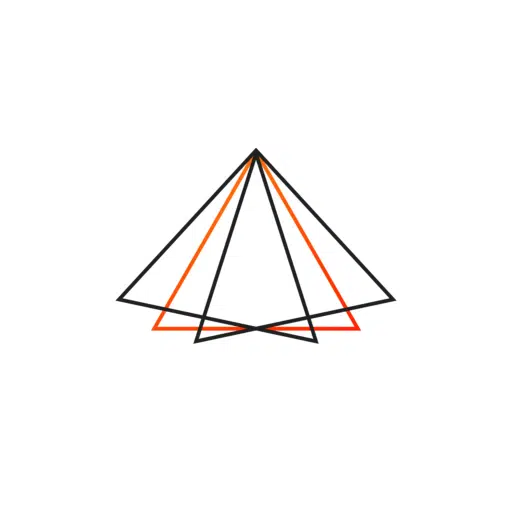Creativity in entrepreneurship is essential because you address new problems without existing solutions. Idea generation tools help you solve problems with products and services.
In this post, we focus on the first step of the creative process: generating ideas. Learn how to generate new ideas and why idea generation is essential. Then we discuss the best techniques and tools useful for entrepreneurs. And finally, discover the next steps that come after idea generation.
Where Do Ideas Come From?
As a leader, you’ll be surprised to see ideas come from the ones you least expect. Susan Cain, the writer of Quiet, says, “there’s zero correlation between being the best talker and having the best ideas.” So making an environment where everyone can be a part of idea production maximises success.
New ideas come from breaking the old patterns, making connections, and getting fresh perspectives. These are some ways to encourage your team to idea generation:
- Positive reinforcement. Using positive phrases helps open up space in the mind by letting go of positivity and stress.
- Treasuring the downtime. Taking breaks helps your mind focus. The brightest ideas sometimes come to light when you take a moment to gaze outside the window or go for a walk.
- Setting the atmosphere. Reducing distractions like email alerts and calls is also helpful. You should also ensure people feel comfortable in the room, by addressing the temperature and chairs if needed.
Why Is Idea Generation Important?
We come up with ideas because we constantly face challenges. There are always things around us to be improved. Improvement and problem-solving are the main objectives when it comes to ideation.
Idea generation is the beginning stage of innovation management. You need innovation to increase profit, stay competitive, ensure agility and improve employee engagement. Check out our other blog post, “How Can Entrepreneurs Benefit From Innovation Management Tools?” to read more about why ideation is essential for your business.
Welcoming new ideas is a factor that differentiates modern ventures from old ones. Imagine an employee in a 500-year-old olive oil company who goes to the manager to propose a new idea. ‘What if we make a new product with banana essence?’ The traditional manager’s reaction would greatly disappoint the creative employee. Although silly, we’ll go back to the banana idea at the end of the article to see how it helps us in the ideation process.
Idea Generation Techniques For Entrepreneurs
There are two misconceptions about idea generation. One is that it’s only needed in senior management, and the second is that people are born with it.
Perhaps, you have tried brainstorming as a quick and productive idea generation technique, but there are many more. Here are our top picks:
Brainstorming
Brainstorming is the most popular idea generation method; so popular that it has been developed into many types, such as:
- Brain-writing, where you write ideas down instead of telling them out loud.
- Role-storming, where you assign people roles while brainstorming. They can be clients, managers, data analysts, influencers, etc.
- Star-bursting, where you focus on generating answers rather than questions.
- Round-Robin brainstorming, where you stress everyone’s contribution by circulating ideas and working on your neighbour’s ideas.
Reverse Brainstorming
Reverse brainstorming is an excellent way to break the silence in a brainstorming session. In the reversal technique, you turn your idea upside down. The best time to use it is when the usual course of generating ideas meets a dead end.
When you brainstorm, you try to define the challenge and write down what it is. Take a step back to discover what the problem is not. What can you achieve from the opposite? So, you generate negative ideas or shed light on the positive outcomes of a bad idea. This idea generation technique is all about rephrasing the question. Here are some examples.
If your goal is to increase brand awareness, ask people how to decrease it with social media. Do you want to open a new branch? Ask your team what could be done to shut down the other branches. Does it sound stupid and a waste of time? Try it, and you’ll be surprised how it can trigger new ideas and opportunities.
O’Connor’s Seven Essential Innovation Questions (SEIQ)
This method comes in handy when you feel entirely blocked, staring at a clean whiteboard for hours. It helps you get to your Eureka moment easier. Bill O’Connor, a Corporate Strategist from Autodesk software corporation, came up with this method while researching. In the SEIQ method, you identify a challenge (e.g., a competitor’s product) or an opportunity (e.g., the need for a new product). Then you try to make questions around these seven concepts: look, use, move, interconnect, alter, make, and imagine. Questions can look like this:
LOOK – What could you look at from a higher level? How could you look at it like a kid would?
USE – What could you leverage better, or for the first time? What new aspects of something could you use?
MOVE – What could you import from another field or realm? What could you remove to help you streamline?
INTERCONNECT – What people or groups could you form new partnerships with? What could you make more open to enable co-creation?
ALTER – How could you radically increase inequality? How could you change design/ performance/ aesthetics?
MAKE – What new meaning/ processes/ functions could you create?
IMAGINE – What crazy idea could you try that might work? What could you learn from Sci-Fi?
Metaphorical thinking
‘You are my sunshine.’ When you say it to someone, you don’t mean that they are warm rays from a huge glowing star at the centre of the Solar System. You mean they have characteristics similar to the sunshine. The sun is essential for our existence, and so are they in your life. The sunshine is bright and warm, and so are they.
‘You’re my sunshine’ is a metaphor. How can we use metaphorical thinking to improve products and generate new ideas? If you have a new challenge or opportunity, try connecting it to a similar process you’re familiar with. What was the last challenge you overcame in your life? Maybe you learned how to swim or how to ride a bicycle. What were the solutions for this metaphorical example? You made time in your busy schedule, asked for teacher recommendations, talked to an expert, booked a private class, and practised regularly.
Now back to the real problem. How can metaphorical solutions inspire real ones? ‘Making time in your schedule’ can inspire ‘investing in time management apps’ for your team or ‘hiring new personnel’. ‘Asking for recommendations’ translates into ‘market research’. ‘Practising regularly’ could be a ‘steady process of revision’ on new products, and so on.
Metaphors are powerful tools because they evoke vivid images and make understanding memorable. They empower your team to think outside the box and deal with complex issues.
SCAMPER
The SCAMPER technique helps improve existing products and get them to the next level. SCAMPER stands for substitute, combine, adapt, modify, put to another use, eliminate and reverse. Here are some questions you can use as idea generation tools.
SUBSTITUTE – What processes could you substitute to make them more affordable? Could you use this product elsewhere?
COMBINE – Could you combine resources to create a new approach to this product?
ADAPT – Could you readjust this product to serve another purpose? What products look like yours?
MODIFY – How could you reshape your product? What could you highlight to create more value?
PUT TO ANOTHER USE – How could you make a new product by recycling the waste from this product? Could you change the target market to include more people?
ELIMINATE – How could you simplify this product? What parts would you eliminate?
REVERSE – What would happen if you sequenced the steps differently?
The Reframing Matrix
The reframing matrix relies on different perspectives of people when thinking about the same problem. Sometimes you can’t come up with a solution unless you see things differently. Think of it as temporarily swapping your brain with your colleague’s or a competitor.
When taking this approach, use the four P’s approach. Four business perspectives are program, planning, potential, and people.
Identify a challenge and divide your team into four groups. Each group will look at the problem from the assigned perspective and try to find solutions.
For example, one focuses on people, trying to get inside the heads of staff, shareholders and customers. They try to think of ideas to make the product look more attractive to them. Then the groups share their results to come up with a general solution to the main challenge.
What Are Idea Generation Tools?
Idea generation tools can be apps, software and online platforms. They are designed to help groups and individuals generate, collect, categorise, and evaluate ideas. They range from online whiteboards to mind mapping and interactive presentation tools. Here are our top picks:
Milanote
Milanote is an online whiteboard with a drag-and-drop interface. It comes in handy when your team is doing remote work. An online whiteboard is better than a physical one because it enables you to attach pictures in a well-designed interface. Many prominent clients, from Uber to Netflix, Adobe, and Dropbox, rely on this tool for their daily brainstorming sessions.
XMind
A mind map is when you write a central idea and list other information around it with a hierarchy. XMind enables you to make mind maps and manage your brainstorming sessions effectively. This tool lets you visualise your thoughts with tree tables, fishbone diagrams, organisation charts, and timelines.
You can present your mind map like a slideshow and use the pitch to present your ideas to a group. It comes with various eye-catching designs and is easy to use across all platforms and system operators. Colourful stickers and markers help your team in boosting memory and productive learning.
Mentimeter
Mentimeter is a presentation tool that engages the audience in idea generation. Interactive word clouds and quizzes help you to have inclusive and efficient meetings. The presenter can collect live data while the audience shares their opinion anonymously with smart devices.
MindMeister
MindMeister is a mind mapping program that allows you to visualise your ideas, collaborate with your team and manage your tasks. The modern design and the intuitive interface make it easy to generate ideas, take notes and plan processes. A cool feature is that you can view the update history and export projects to the desired format.
Aha!
Aha! is a roadmap software that enables you to define business goals and track your progress. It is also an idea generation tool. After your team presents their ideas, you can evaluate them and track the trends. Defining tasks and optimising customer journeys are simple with analysing and prioritising features. Other features are antivirus detection, IP address access restriction, customisable tables, profile backup, and transfer.
What Comes After Idea Generation?
Generating ideas is the first step in the idea management funnel. When developing new ideas, let them flow without obstructing them. Then continue to examine the pool of ideas and whittle down the list to sort the realistic ones.
These steps follow the use of idea generation tools:
- Refine and evaluate: see if the idea makes sense. Can you improve it by changing some details? Going back to the idea of banana in olive oil, can you use banana powder instead of banana essence? What if you use orange juice instead?
- Validate: determine if the idea has a chance to succeed. We have an article about “How to Use Idea Validation to Test Your Ideas” that can get you through this step of innovation management.
- Plan: make a business plan to turn your idea into a product or a service. For example, what is the process for incorporating bananas into the olive oil extraction process? What machinery will you need?
- Test: put it to use, define a small group of people and test your product on them. See how they react. How do they like the banana taste in olive oil?
- Implement: make the product on a large scale and start selling.
Conclusion
Creativity should be sustainable, not intermittent. One bright idea is not enough for the success of a business. Your team is the best source for problem-solving with new products and services. You can use the tools and techniques we introduced here to avoid awkward silence in meetings and idea-generation sessions.
As Joshua Snyder, CTO of TimeNavi, told us in an exclusive interview, “don’t fuss about the idea, just dig in and get started”. Follow his journey from having a simple idea to developing it into a full-time venture in “How to Turn a Bright Idea Into a Full-Time Venture”.




